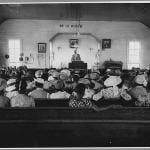
Warning: There be spoilers here.
When it was announced last year that Marvel Studios was going to produce a new version of The Incredible Hulk, only a few years after Ang Lee’s film came out to mixed reviews and middling box-office in 2003, many people wondered why they would bother. But now that the film is out there, I think we can safely say that the answer boils down to two words: The Avengers.
For many years, the typical comic-book movie revolved around a single hero and the various sidekicks and villains that are typically associated with that hero — and the producers of those films typically created distinct worlds for their heroes that wouldn’t necessarily have meshed with any of the other heroes’ worlds. Just look at the original Superman (1978-1987) and Batman (1989-1997) franchises: one takes place in a Metropolis that is basically just a regular street-level depiction of New York City, the other takes place in a Gotham City that couldn’t look more fake, more stylized, more confined to a soundstage if it tried. A cross-over between these franchises was basically unthinkable. In what possible universe could these two cities, let alone the characters who inhabit them, have co-existed?
The cinematic segregation of superheroes was even more entrenched for the Marvel characters, because each of them was brought to the screen by a different studio. DC Comics is part of the Time Warner empire, so all of the Batman and Superman films have been produced by Warner Brothers — but until recently, Marvel had licensed its heroes to various different studios, so that Spider-Man (2002-2007) was produced by Sony, Hulk was produced by Universal, The Punisher (2004-2008; my review) was produced by Lions Gate, and so on. So sharp are the lines between these various franchises that, according to the MTV Movies Blog, the new Hulk could not even give a university the name that it has in the Spider-Man movies.
Things sort of changed with the X-Men (2000-2006) and Fantastic Four (2005-2007) movies, both of which revolved around teams of superheroes. But even then, while there was a variety of superheroes within each team, the teams themselves were pretty much hermetically sealed off from all the other Marvel franchises — and even, so far, from each other, even though both of them were produced by Fox.
But now Marvel is trying something new. Instead of merely letting other studios buy the film rights to their heroes, they are producing the films themselves — and this gives them the freedom to cross-pollinate their franchises even when they are distributed by different companies. Hence, Robert Downey Jr.’s Tony Stark can have a cameo in The Incredible Hulk, which is distributed by Universal, even though his own movie, Iron Man, is distributed by Paramount.
And instead of creating another “team” franchise like the X-Men or Fantastic Four movies, where all the characters exist only within those teams, Marvel now hopes to create a bunch of separate superhero franchises that can stand well enough on their own two feet, before bringing them together in one monstrous cross-over extravaganza, namely The Avengers — which they announced immediately after the smash success of Iron Man‘s opening weekend last month.
And since the Hulk is one of the original Avengers, the studio needed to re-do the Hulk in a way that would lend itself to this new concept.
Ang Lee’s film was a standalone feature like all the other superhero movies of the past few decades, but this new movie has been written with bigger things in mind. The opening credits include brief glimpses of documents that reference Stark Industries and Nick Fury. And in one scene, General Ross refers to a “super soldier” program that existed during World War II — almost certainly a reference to Captain America. And indeed, it seems that Captain America himself almost had a cameo in The Incredible Hulk, though it ended up on the cutting-room floor — or, more accurately, in the put-it-on-the-DVD file.
And then there is the Tony Stark cameo, which serves the same purpose here that Samuel L. Jackson’s cameo as Nick Fury served in Iron Man — to let the audience know that a much bigger movie is in the works.
So, why re-boot the Hulk franchise so soon? Because we stand on the brink of a major change in how comic-book movies are done. Five years ago, each superhero — or superhero team — stood alone. But now, each hero can have his own franchise and be part of an even larger team. (Though I should note that Incredible Hulk director Louis Leterrier recently told the MTV Movies Blog that he left the ending of his film ambiguous so that the Hulk could be either one of the heroes or the villain when The Avengers is made.)
It will be interesting to see if DC and Time Warner pick up on this. Their recent ill-fated attempt to make a Justice League movie suffered partly because there was some confusion over whether it would be connected to any existing or future standalone superhero movies. But if they left the current Batman and Superman storylines alone, it is not too hard to believe that they could do some interesting things with the Justice League’s other characters.
And now for something completely different: The Globe and Mail has a story on the fact that the film sees Bruce Banner hiding out in Bella Coola, British Columbia — and it notes that, if the residents of this town want to see the film in the theatre, they will have to drive six hours to Williams Lake. As it happens, my wife’s aunt owns some property in Nimpo Lake, which is between Bella Coola and Williams Lake, and we visited her there last year. The map below shows the route from Vancouver (A) to Williams Lake (B) to Nimpo Lake (C) to Bella Coola (D). Enjoy!











